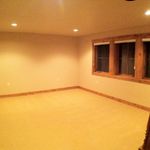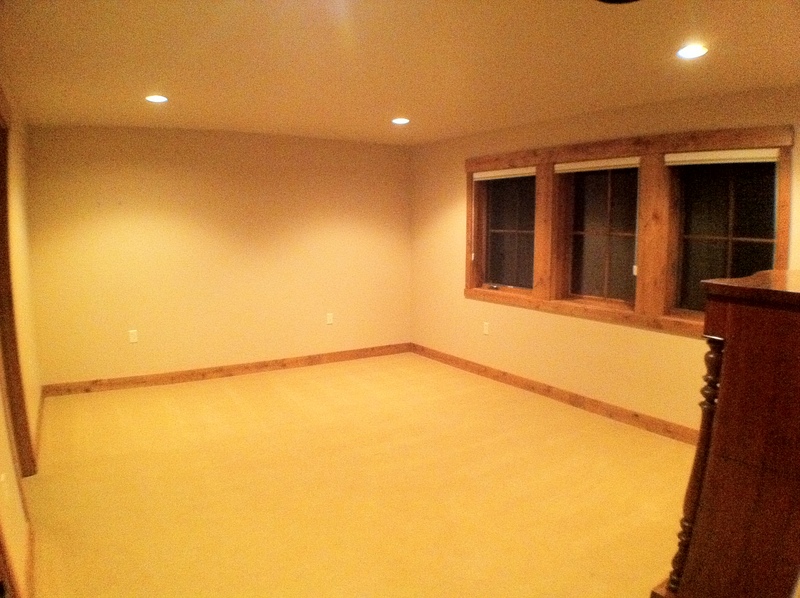Does marketing a vacant home hurt your chances of a sale? We often get asked this question by folks selling a rental home, vacation home, or by those that have an opportunity to relocate before their home sells. They are concerned that a cold, empty home will not show nearly as well as one that brims with warm feelings, staged furnishings, and the artifacts of human occupation.
Much of this fear comes from stories they’ve heard about the benefits of staging. There is a certain segment of the population that has a hard time picturing how furnishings might layout in any given space, and these folks certainly benefit from the well placed furnishings for their comparison. And those that have toured builder model homes cannot deny the inviting feel of a warm and well appointed house. Some of our clients have even suggested placing tenants in their home just as a showing feature. (This is not recommended under most any circumstance.)
It is always our intent to get our clients the highest value for their property in the shortest amount of time with the least number of hassles. We take our responsibility seriously, and we get this question about vacant homes often, so we wanted to find some statistics to put this question to rest once in for all.
 The reason the vacant home question has not been easy to answer, is there is a mitigating force that works against the “warm home” amenity of an occupied home. The fact is, vacant homes are VERY easy for buyers’ brokers to show. We can personally attest to the relief a broker feels when going through a list of potential homes for the day and sees the word “vacant” in the showing instructions. “Oh, good…that one’s vacant.” And we would bet that is the same phrase that goes through every other broker’s mind in that same situation. To explain this phenomenon, let’s take a quick look at what goes into the preparation for a day of showing buyers.
The reason the vacant home question has not been easy to answer, is there is a mitigating force that works against the “warm home” amenity of an occupied home. The fact is, vacant homes are VERY easy for buyers’ brokers to show. We can personally attest to the relief a broker feels when going through a list of potential homes for the day and sees the word “vacant” in the showing instructions. “Oh, good…that one’s vacant.” And we would bet that is the same phrase that goes through every other broker’s mind in that same situation. To explain this phenomenon, let’s take a quick look at what goes into the preparation for a day of showing buyers.
As professionals, we work to keep our purchasers on focus to find the property that best suits their specific needs. However, there is the occasion when the parameters that fit a particular client result in more houses than are practical to show in a single day. Experience tells us that eight homes are about the maximum limit of properties that the average consumer can really absorb in a day. Homes have a lot of individual variables to remember and keep straight and anything in excess of eight is overwhelming to most buyers. So, if a particular search yields a possible 15 homes that fit the criteria, it is the brokers’ job to start culling this list to something more manageable. In times of good inventory, or within somewhat homogenous neighborhoods, we’re searching for small details that may make one property just slightly more appealing than another. This is where “easy to show” is a major factor.
The day’s schedule is always a challenge. It is very difficult to predict how much time is going to be needed in each prospective home and calculate appropriate transit time (with pit stops) in between homes. However, it’s not convenient for sellers to be kicked out of their home all day, so we try to work within maximum appointment windows of an hour each.
Just imagine if we have four very similar homes on the list that we need to reduce. The least likely to be shown is “agent must accompany.” Some sellers feel this type of showing arrangement gives them an extra sense of home security, or a better presentation as their representative will be present to enumerate all of the homes many features. In reality what it achieves is getting them cut from the list. Coordinating a tour with their agents schedule is a hassle for the buyer’s agent. Hassles don’t make the list.
Then there is the “24-hour notice required” home. This is the standard rule when tenants occupy the home, but we’ve also seen it used by sellers that prefer a less-than-organized lifestyle and need that time to prepare the home. Not a problem if the appointments are a couple of days out, but often changes are being made to the list last minute and these guys are out.
The most common arrangement is “call for appointment.” Depending on the broker, this is a call to them or directly to the seller. Normally this works out just fine, but on occasion the buyer’s broker has to leave a message, or the time window is inconvenient and the seller asks for a different appointment time. (Important to remember here that by the time the seller is contacted, the list of properties is usually already set, a map of the route has been established, and time windows have been assigned to each property. Asking for a change in the appointment time is a good way to end up on the cutting room floor.)
Then there is the vacant listing. It almost always makes the list. Easy to get in and out of, no appointment necessary, and if the broker has to call a last minute change to keep the tour on schedule this is the one listing they don’t have to call back to modify. These homes can be shown late and early with no inconvenience, and it’s easy to “drop in” on them when you have a prospect in the car. Brokers will often bring clients into vacant listings during orientation area tours and show them to clients that insist they are just starting to consider the area.
But does this convenience compensate for a “cold home” when it comes to sales? Let’s take a look… In the greater Central Oregon area today there are 1,002 single-family homes on the market. Of these, 182 of them are listed as vacant, or about 18%. However, so we could really try to isolate the effect of “vacantness” on the salability of the property, we wanted to limit the influence of foreclosures and distressed sales. If we take out short-sales and banked-owned properties we’re left with 875 homes for sale, of which, 129 are vacant, or about 15%. As there is no system to look back in time at this ratio, let’s assume it stays fairly constant. Given this percentage, it would be normal to expect 15% of sales for any time period to be vacant homes.
Now let’s look at the sales. Over the last 90 days, and excluding short sales and bank-owned properties, 396 homes have sold in greater Central Oregon. Of this group, 147 of them were vacant. That’s 37%, or well over twice as many as we would expect to see. Think that’s just a recent phenomenon? Going back over the past year, we see 1,452 sales of non-distressed homes, of which 524, or 36% were vacant.
So if moving out of your house before you sell correlates with a 250% better chance you’ll be in the winner’s circle, is it always the best policy? Well, that’s a little harder to say. One theory is that people with vacant homes are more likely take less for their property, so although they sold, they may have not received top dollar for their property. That analysis is beyond the scope of this article but we can report that vacant homes received 97.1% of their asking price, versus 95.3% of asking price from the total homes sold. It was also an advantage in market time as vacant homes sold in 158 days on average, compared to 162 days for all homes sold.
Before you pack up all of your belongings and move in with your aunt just to get your home sold, please understand that this analysis was hardly exhaustive, and in no way are we suggesting that being vacant is what caused these homes to sale faster. Most notably, the average list price for a vacant home was 20% less than an occupied home. That metric alone could be enough to describe the variances we noted. However, nothing we found suggests a vacant home is detrimental to a sale.

